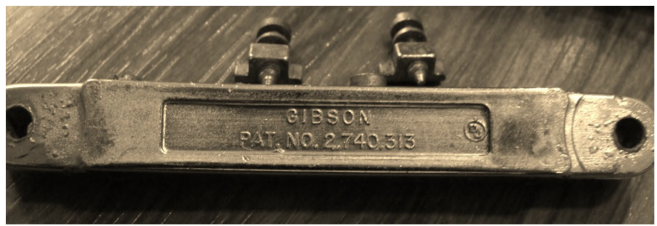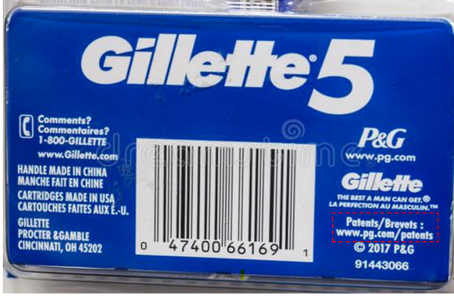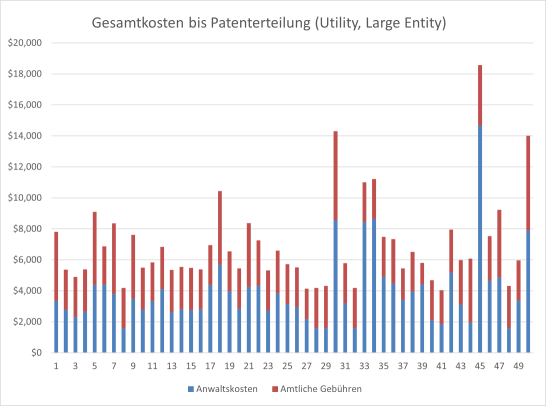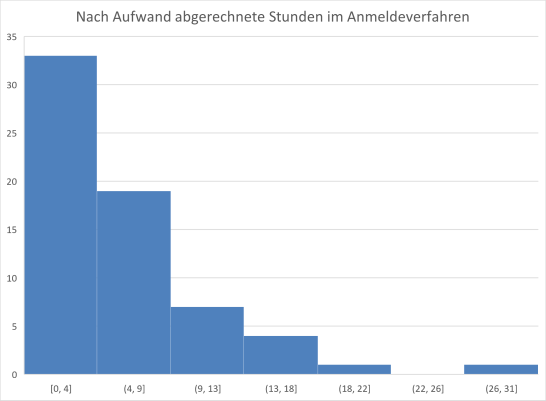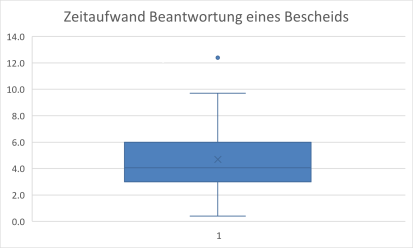Deutsche Unternehmen die in die USA expandieren sollten berücksichtigen, dass es in den USA eine dem Arbeitnehmer-Erfindungsgesetz vergleichbare gesetzliche Regelung nicht gibt. US Recht basiert darauf, dass der Erfinder zunächst die Rechte an seiner Erfindung besitzt. Es ist allerdings üblich, dass ein Arbeitgeber Regeln hinsichtlich der Erfindungen seiner Mitarbeiter erlässt. Diese Regeln enthalten im Kern meist ein Versprechen des Arbeitnehmers, Erfindungen an den Arbeitgeber zu übertragen (durch ein Assignment). Im „offer letter“ mit dem dem Erfinder eine Stellung im Unternehmen angeboten wurde sollte sich ein Hinweis auf die Regeln finden, möglicherweise in Form eines Verweises auf eine company policy.
Das Versprechen der Übertragung reicht zum Rechteübergang allein nicht aus. Wichtig ist, dass der Erfinder tatsächlich seine Rechte an der Erfindung an den Arbeitgeber überträgt, also das Assigment unterschreibt.
Ob und wie ein Arbeitgeber Erfindungen honoriert ist frei wählbar. Einige Arbeitgeber zahlen einen kleinen Bonus von z.B. $1000 an jeden Erfinder nach Patenterteilung. Andere zahlen nichts. Auch hier gilt möglicherweise eine Company Policy.
Hier ein Beispiel eines „Confidential Information and Invention Assignment Agreements“. Siehe insbesondere Absatz 4 (b).
Exhibit A
CONFIDENTIAL INFORMATION AND
INVENTION ASSIGNMENT AGREEMENT
As a condition of my becoming employed (or my employment being continued) or retained as a consultant (or my consulting relationship being continued) by XXX, Inc., a Delaware corporation, with any of its current or future subsidiaries, affiliates, successors or assigns (collectively, the “Company”), and in consideration of my employment or consulting relationship with the Company and my receipt of the compensation now and hereafter paid to me by the Company, I agree to the following:
1. Employment or Consulting Relationship. I understand and acknowledge that this Agreement does not alter, amend or expand upon any rights I may have to continue in the employ of, or in a consulting relationship with, or the duration of my employment or consulting relationship with, the Company under any existing agreements between the Company and me or under applicable law. Any employment or consulting relationship between the Company and me, whether commenced prior to or upon the date of this Agreement, shall be referred to herein as the “Relationship.”
2. At-Will Employment. I understand and acknowledge that my Relationship with the Company is and shall continue to be at-will, as defined under applicable law, meaning that either I or the Company may terminate the Relationship at any time for any reason or no reason, without further obligation or liability.
3. Confidential Information.
(a) Company Information. I agree at all times during the term of my Relationship with the Company and thereafter, to hold in strictest confidence, and not to use, except for the benefit of the Company, or to disclose to any person, firm, corporation or other entity without written authorization of the Board of Directors of the Company, any Confidential Information of the Company which I obtain or create. I further agree not to make copies of such Confidential Information except as authorized by the Company. I understand that “Confidential Information” means any Company proprietary information, technical data, trade secrets or know-how, including, but not limited to, research, product plans, products, services, suppliers, customer lists and customers (including, but not limited to, customers of the Company on whom I called or with whom I became acquainted during the Relationship), prices and costs, markets, software, developments, inventions, laboratory notebooks, processes, formulas, technology, designs, drawings, engineering, hardware configuration information, marketing, licenses, finances, budgets or other business information disclosed to me by the Company either directly or indirectly in writing, orally or by drawings or observation of parts or equipment or created by me during the period of the Relationship, whether or not during working hours, and any information pertaining to any aspects of the Company’s business which is either information not known by actual or potential competitors of the Company or is proprietary information of the Company or its customers or suppliers, whether of a technical nature or otherwise. I further understand that Confidential Information does not include any of the foregoing items which has become publicly and widely known and made generally available through no wrongful act of mine or of others who were under confidentiality obligations as to the item or items involved.
(b) Former Employer Information. I represent that my performance of all terms of this Agreement as an employee or consultant of the Company have not breached and will not breach any agreement to keep in confidence proprietary information, knowledge or data acquired by me in confidence or trust prior or subsequent to the commencement of my Relationship with the Company, and I will not disclose to the Company, or induce the Company to use, any inventions, confidential or proprietary information or material belonging to any previous employer or any other party.
(c) Third Party Information. I recognize that the Company has received and in the future will receive from third parties their confidential or proprietary information subject to a duty on the Company’s part to maintain the confidentiality of such information and to use it only for certain limited purposes. I agree to hold all such confidential or proprietary information in the strictest confidence and not to disclose it to any person, firm or corporation or to use it except as necessary in carrying out my work for the Company consistent with the Company’s agreement with such third party.
4. Inventions.
(a) Inventions Retained and Licensed. I have attached hereto, as Exhibit A, a list describing with particularity all inventions, original works of authorship, developments, improvements, and trade secrets which were made by me prior to the commencement of the Relationship (collectively referred to as “Prior Inventions”), which belong solely to me or belong to me jointly with another, which relate in any way to any of the Company’s proposed businesses, products or research and development, and which are not assigned to the Company hereunder; or, if no such list is attached, I represent that there are no such Prior Inventions. If, in the course of my Relationship with the Company, I incorporate into a Company product, process or machine a Prior Invention owned by me or in which I have an interest, the Company is hereby granted and shall have a non-exclusive, royalty-free, irrevocable, perpetual, worldwide license (with the right to sublicense) to make, have made, copy, modify, make derivative works of, use, sell and otherwise distribute such Prior Invention as part of or in connection with such product, process or machine.
(b) Assignment of Inventions. I agree that I will promptly make full written disclosure to the Company, will hold in trust for the sole right and benefit of the Company, and hereby assign to the Company, or its designee, all my right, title and interest throughout the world in and to any and all inventions, original works of authorship, developments, concepts, know-how, improvements or trade secrets, whether or not patentable or registrable under copyright or similar laws, which I may solely or jointly conceive or develop or reduce to practice, or cause to be conceived or developed or reduced to practice, during the period of time in which I am employed by or a consultant of the Company (collectively referred to as “Inventions”), except as provided in Section 4(e) below. I further acknowledge that all inventions, original works of authorship, developments, concepts, know-how, improvements or trade secrets which are made by me (solely or jointly with others) within the scope of and during the period of my Relationship with the Company are “works made for hire” (to the greatest extent permitted by applicable law) and are compensated by my salary (if I am an employee) or by such amounts paid to me under any applicable consulting agreement or consulting arrangements (if I am a consultant), unless regulated otherwise by the mandatory law of the state of California.
(c) Maintenance of Records. I agree to keep and maintain adequate and current written records of all Inventions made by me (solely or jointly with others) during the term of my Relationship with the Company. The records may be in the form of notes, sketches, drawings, flow charts, electronic data or recordings, laboratory notebooks, and any other format. The records will be available to and remain the sole property of the Company at all times. I agree not to remove such records from the Company’s place of business except as expressly permitted by Company policy which may, from time to time, be revised at the sole election of the Company for the purpose of furthering the Company’s business.
(d) Patent and Copyright Rights. I agree to assist the Company, or its designee, at the Company’s expense, in every proper way to secure the Company’s rights in the Inventions and any copyrights, patents, trademarks, mask work rights, moral rights, or other intellectual property rights relating thereto in any and all countries, including the disclosure to the Company of all pertinent information and data with respect thereto, the execution of all applications, specifications, oaths, assignments, recordations, and all other instruments which the Company shall deem necessary in order to apply for, obtain, maintain and transfer such rights and in order to assign and convey to the Company, its successors, assigns and nominees the sole and exclusive rights, title and interest in and to such Inventions, and any copyrights, patents, mask work rights or other intellectual property rights relating thereto. I further agree that my obligation to execute or cause to be executed, when it is in my power to do so, any such instrument or papers shall continue after the termination of this Agreement until the expiration of the last such intellectual property right to expire in any country of the world. If the Company is unable because of my mental or physical incapacity or unavailability or for any other reason to secure my signature to apply for or to pursue any application for any United States or foreign patents or copyright registrations covering Inventions or original works of authorship assigned to the Company as above, then I hereby irrevocably designate and appoint the Company and its duly authorized officers and agents as my agent and attorney in fact, to act for and in my behalf and stead to execute and file any such applications and to do all other lawfully permitted acts to further the application for, prosecution, issuance, maintenance or transfer of letters patent or copyright registrations thereon with the same legal force and effect as if originally executed by me. I hereby waive and irrevocably quitclaim to the Company any and all claims, of any nature whatsoever, which I now or hereafter have for infringement of any and all proprietary rights assigned to the Company.
(e) Exception to Assignments. I understand that the provisions of this Agreement requiring assignment of Inventions to the Company do not apply to any invention which qualifies fully under the provisions of California Labor Code Section 2870 (attached hereto as Exhibit B). I will advise the Company promptly in writing of any inventions that I believe meet such provisions and are not otherwise disclosed on Exhibit A.
5. Returning Company Documents. I agree that, at the time of termination of my Relationship with the Company, I will deliver to the Company (and will not keep in my possession, recreate or deliver to anyone else) any and all devices, records, data, notes, reports, proposals, lists, correspondence, specifications, drawings, blueprints, sketches, laboratory notebooks, materials, flow charts, equipment, other documents or property, or reproductions of any aforementioned items developed by me pursuant to the Relationship or otherwise belonging to the Company, its successors or assigns. I further agree that to any property situated on the Company’s premises and owned by the Company, including disks and other storage media, filing cabinets or other work areas, is subject to inspection by Company personnel at any time with or without notice. In the event of the termination of the Relationship, I agree to sign and deliver the “Termination Certification” attached hereto as Exhibit C.
6. Notification to Other Parties.
(a) Employees. In the event that I leave the employ of the Company, I hereby consent to notification by the Company to my new employer about my rights and obligations under this Agreement.
(b) Consultants. I hereby grant consent to notification by the Company to any other parties besides the Company with whom I maintain a consulting relationship, including parties with whom such relationship commences after the effective date of this Agreement, about my rights and obligations under this Agreement.
7. Solicitation of Employees, Consultants and Other Parties. I agree that during the term of my Relationship with the Company, and for a period of twelve (12) months immediately following the termination of my Relationship with the Company for any reason, whether with or without cause, I shall not either directly or indirectly solicit, induce, recruit or encourage any of the Company’s employees or consultants to terminate their relationship with the Company, or take away such employees or consultants, or attempt to solicit, induce, recruit, encourage or take away employees or consultants of the Company, either for myself or for any other person or entity. Further, for a period of twelve (12) months following termination of my Relationship with the Company for any reason, with or without cause, I shall not solicit any licensor to or customer of the Company or licensee of the Company’s products, in each case, that are known to me, with respect to any business, products or services that are competitive to the products or services offered by the Company or under development as of the date of termination of my Relationship with the Company.
8. Representations and Covenants.
(a) Facilitation of Agreement. I agree to execute promptly any proper oath or verify any proper document required to carry out the terms of this Agreement upon the Company’s written request to do so.
(b) Conflicts. I represent that my performance of all the terms of this Agreement will not breach any agreement to keep in confidence proprietary information acquired by me in confidence or in trust prior to commencement of my Relationship with the Company. I have not entered into, and I agree I will not enter into, any oral or written agreement in conflict with any of the provisions of this Agreement.
(c) Voluntary Execution. I certify and acknowledge that I have carefully read all of the provisions of this Agreement and that I understand and will fully and faithfully comply with such provisions.
9. General Provisions.
(a) Governing Law. The validity, interpretation, construction and performance of this Agreement shall be governed by the laws of the State of California, without giving effect to the principles of conflict of laws.
(b) Entire Agreement. This Agreement sets forth the entire agreement and understanding between the Company and me relating to the subject matter herein and merges all prior discussions between us. No modification or amendment to this Agreement, nor any waiver of any rights under this Agreement, will be effective unless in writing signed by the party to be charged. Any subsequent change or changes in my duties, obligations, rights or compensation will not affect the validity or scope of this Agreement.
(c) Severability. If one or more of the provisions in this Agreement are deemed void by law, then the remaining provisions will continue in full force and effect.
(d) Successors and Assigns. This Agreement will be binding upon my heirs, executors, administrators and other legal representatives and will be for the benefit of the Company, its successors, and its assigns.
(e) Survival. The provisions of this Agreement shall survive the termination of the Relationship and the assignment of this Agreement by the Company to any successor in interest or other assignee.
(f) ADVICE OF COUNSEL. I ACKNOWLEDGE THAT, IN EXECUTING THIS AGREEMENT, I HAVE HAD THE OPPORTUNITY TO SEEK THE ADVICE OF INDEPENDENT LEGAL COUNSEL, AND I HAVE READ AND UNDERSTOOD ALL OF THE TERMS AND PROVISIONS OF THIS AGREEMENT. THIS AGREEMENT SHALL NOT BE CONSTRUED AGAINST ANY PARTY BY REASON OF THE DRAFTING OR PREPARATION HEREOF.
